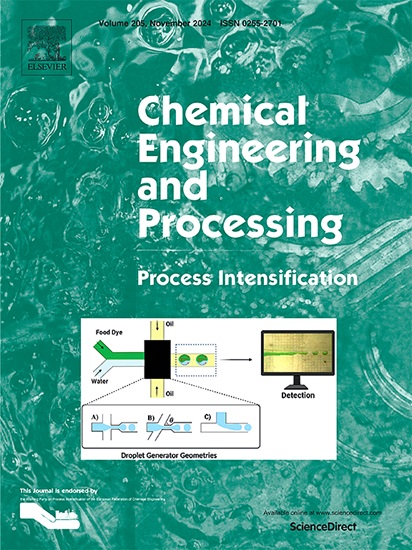Ultrasonic demulsification of water-in-crude oil emulsions: Influence of rheological properties
IF 3.8
3区 工程技术
Q3 ENERGY & FUELS
Chemical Engineering and Processing - Process Intensification
Pub Date : 2025-02-20
DOI:10.1016/j.cep.2025.110242
引用次数: 0
Abstract
In this work, we have studied the rheological properties of commercial water-in-crude oil emulsions of different compositions and the effect of their properties on ultrasonic demulsification. Shear rheological measurements in the temperature range of 10 to 30 °C showed that the emulsion with an aqueous phase concentration of 9.7 wt% behaved as a Newtonian fluid. The emulsion with a water content of 15.0 wt% changed from non-Newtonian to Newtonian flow with an increase in temperature. The more concentrated emulsions with water contents of 37.5 and 54.0 wt% behaved as non-Newtonian pseudoplastic fluids. The Ostwald-Weil model best described the rheological properties of all the non-Newtonian emulsions studied. Ultrasonic treatment of Newtonian emulsions at the power and exposure time parameters studied had a slight effect on water separation and resulted in an increase in viscosity, indicating the ineffectiveness of ultrasonic demulsification of these emulsions. In the case of non-Newtonian emulsions, an intensification of the demulsification process reached 46–61 %. The most effective water separation from all emulsions was observed with the ultrasonic treatment at a power of 0.2 kW after 2 min. However, the demulsification and emulsification processes occur simultaneously in emulsions treated with ultrasound. For this reason, the power and the exposure time are the parameters that need to be optimised for each specific type of crude oil emulsion depending on the concentrations of the aqueous phase, natural emulsifiers and solid impurities.

求助全文
约1分钟内获得全文
求助全文
来源期刊
CiteScore
7.80
自引率
9.30%
发文量
408
审稿时长
49 days
期刊介绍:
Chemical Engineering and Processing: Process Intensification is intended for practicing researchers in industry and academia, working in the field of Process Engineering and related to the subject of Process Intensification.Articles published in the Journal demonstrate how novel discoveries, developments and theories in the field of Process Engineering and in particular Process Intensification may be used for analysis and design of innovative equipment and processing methods with substantially improved sustainability, efficiency and environmental performance.

 求助内容:
求助内容: 应助结果提醒方式:
应助结果提醒方式:


